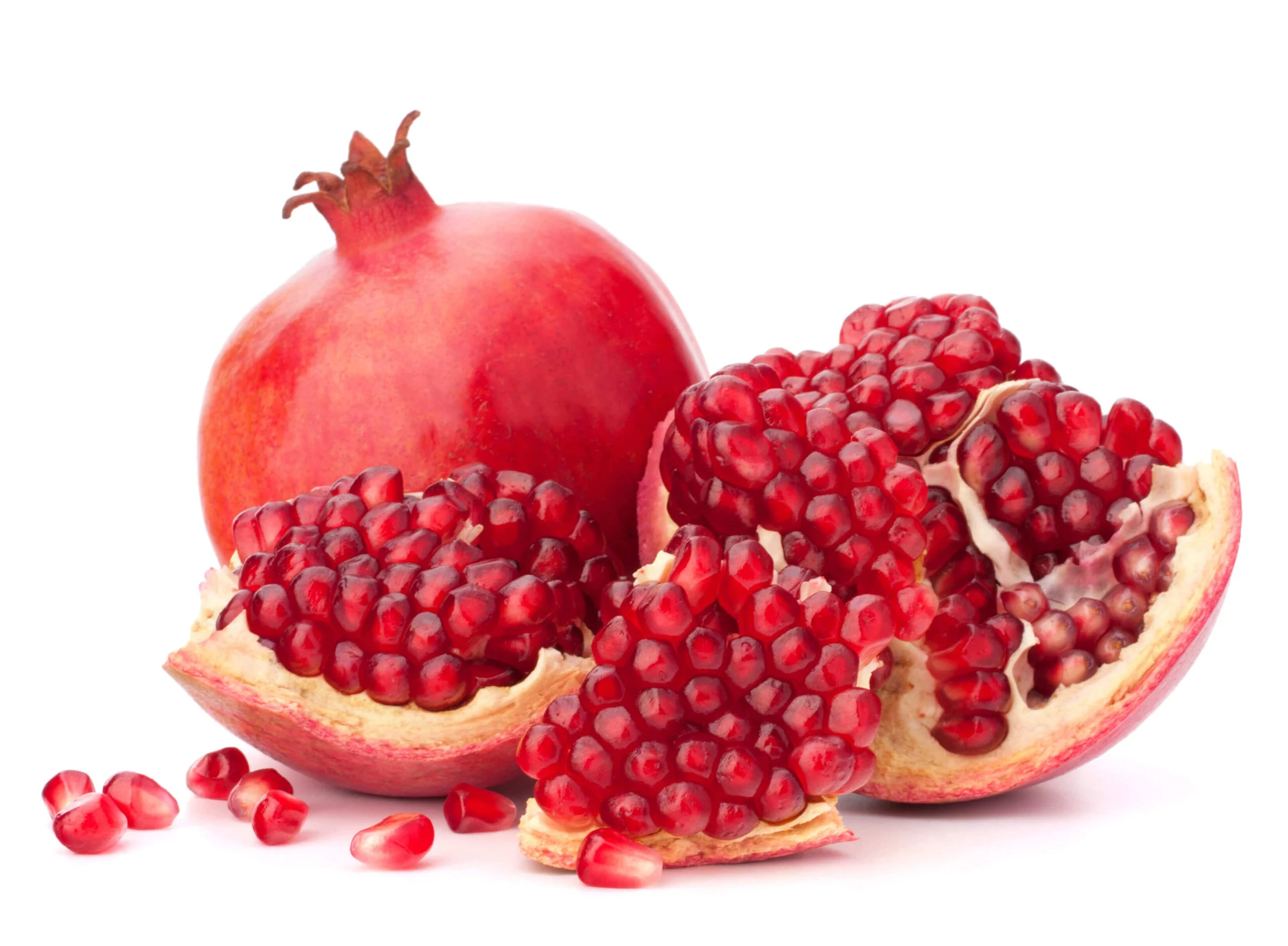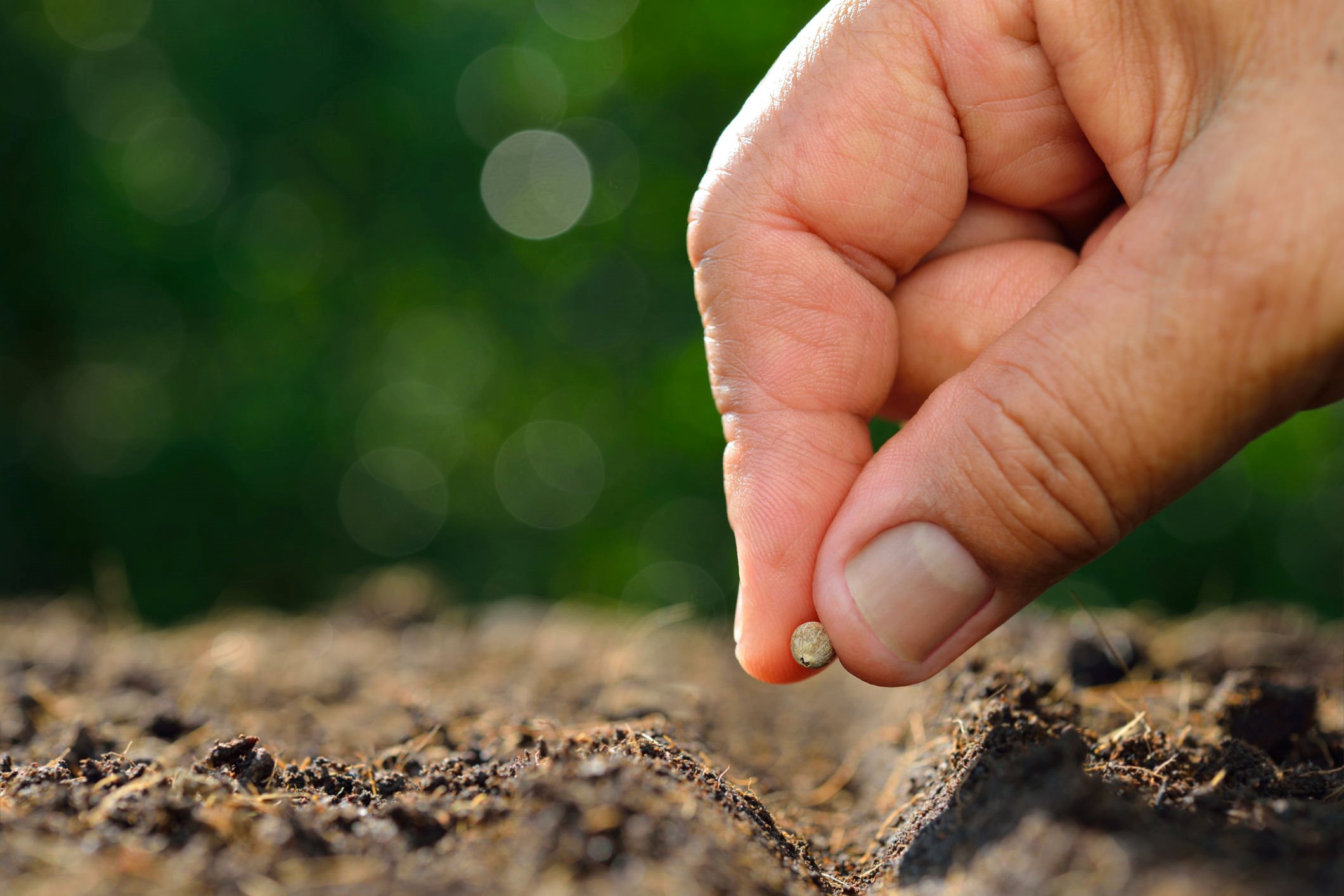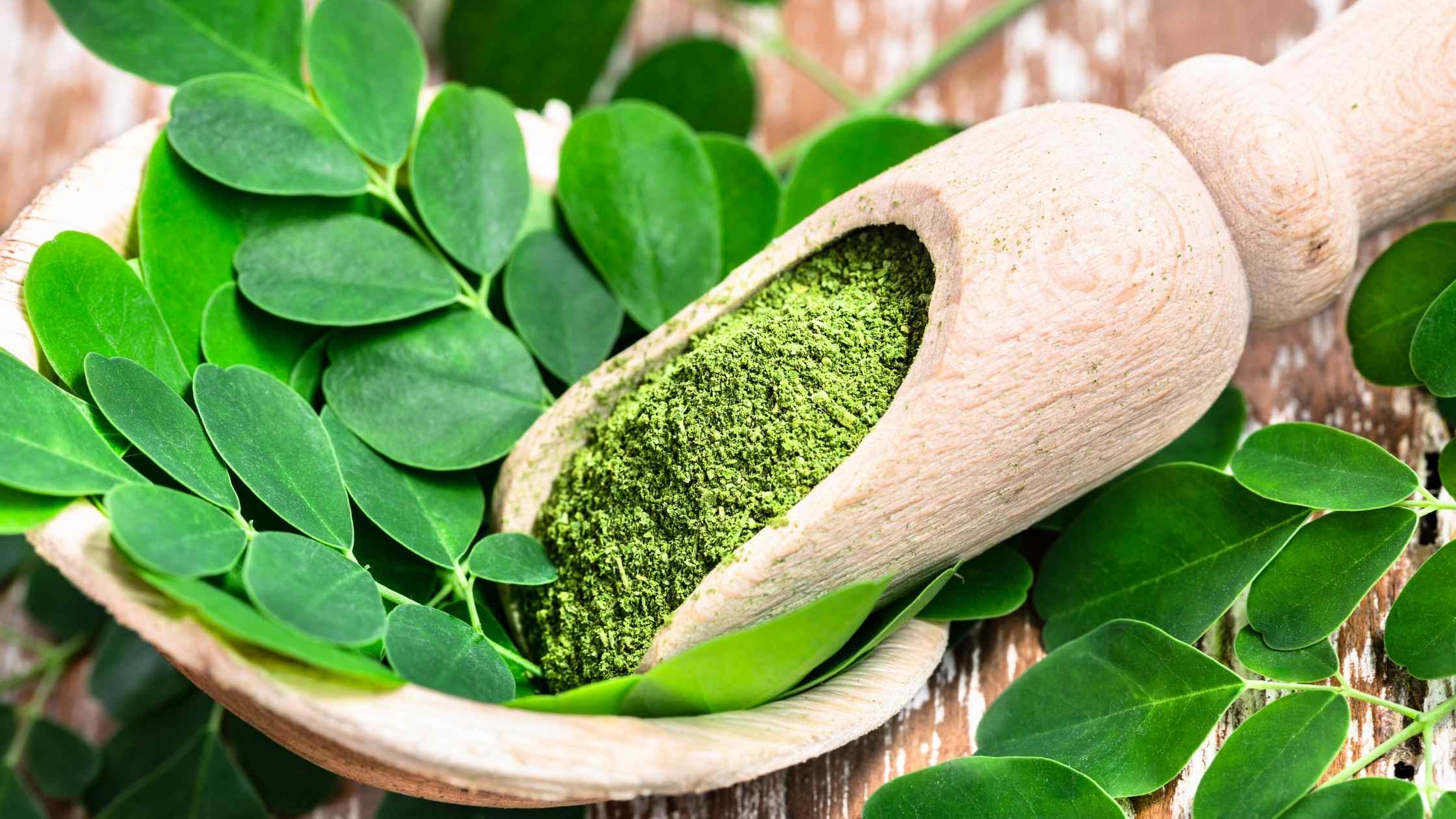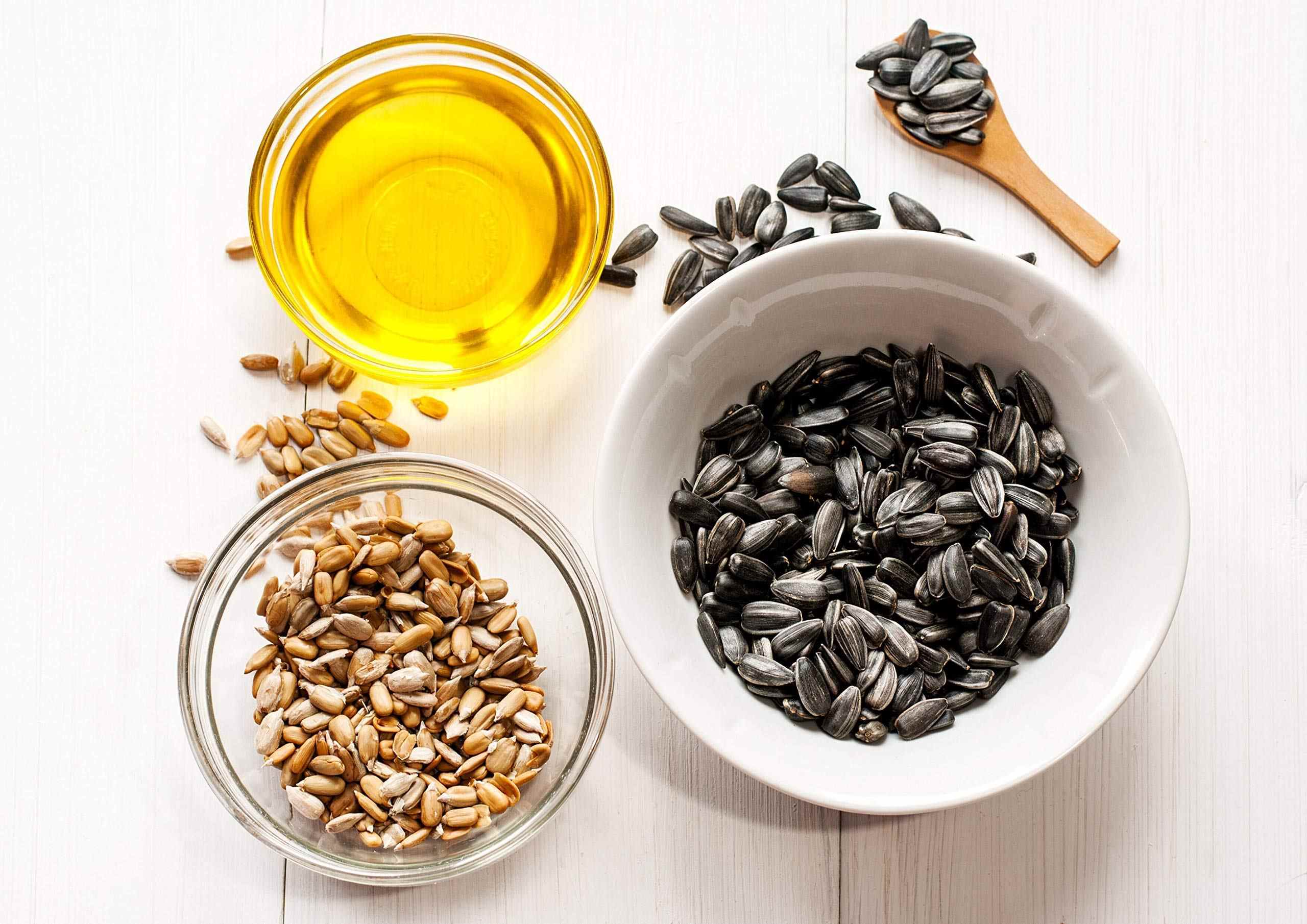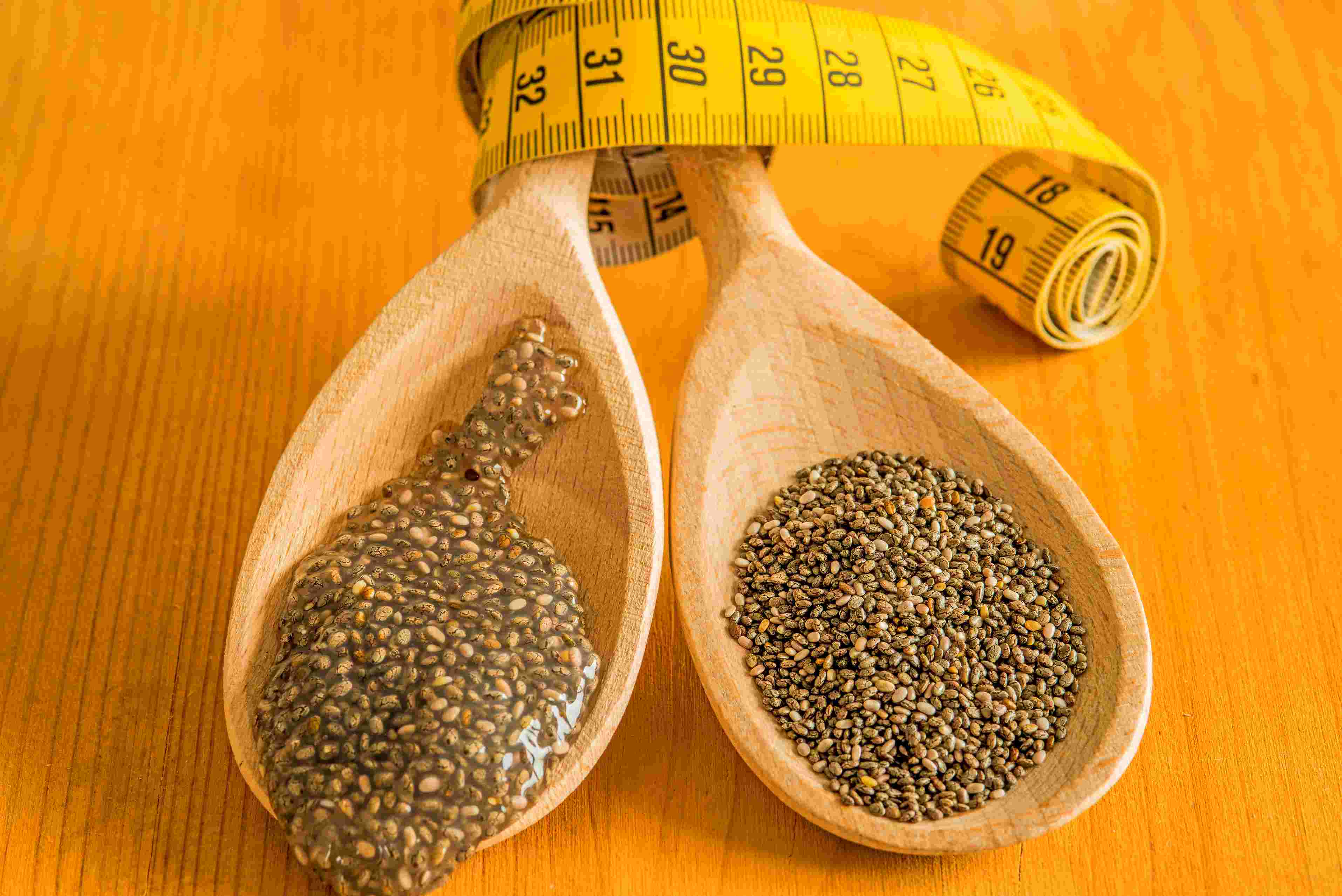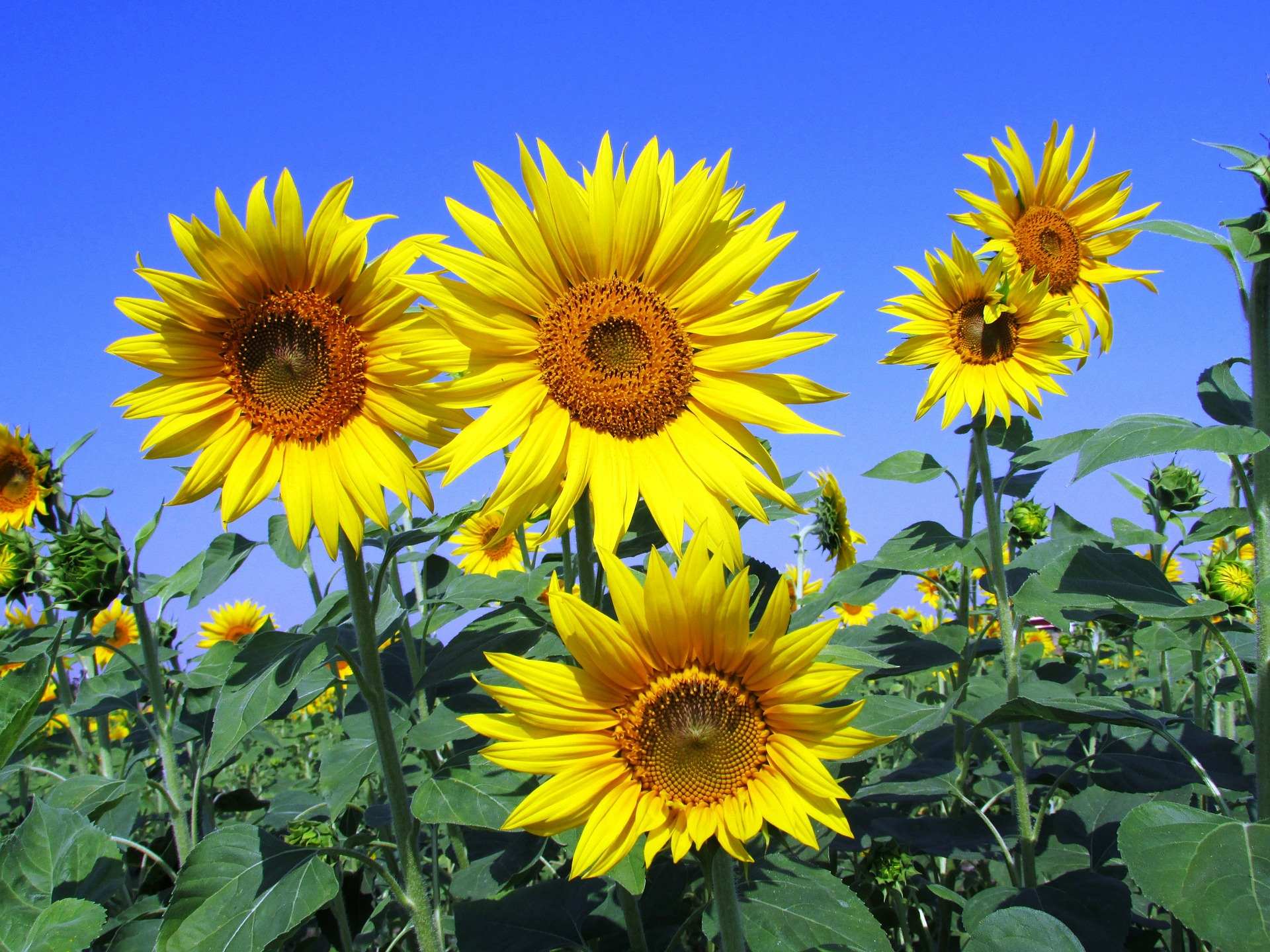Home>Types of Gardening>Ornamental Gardening>How Many Seeds Are In A Sunflower
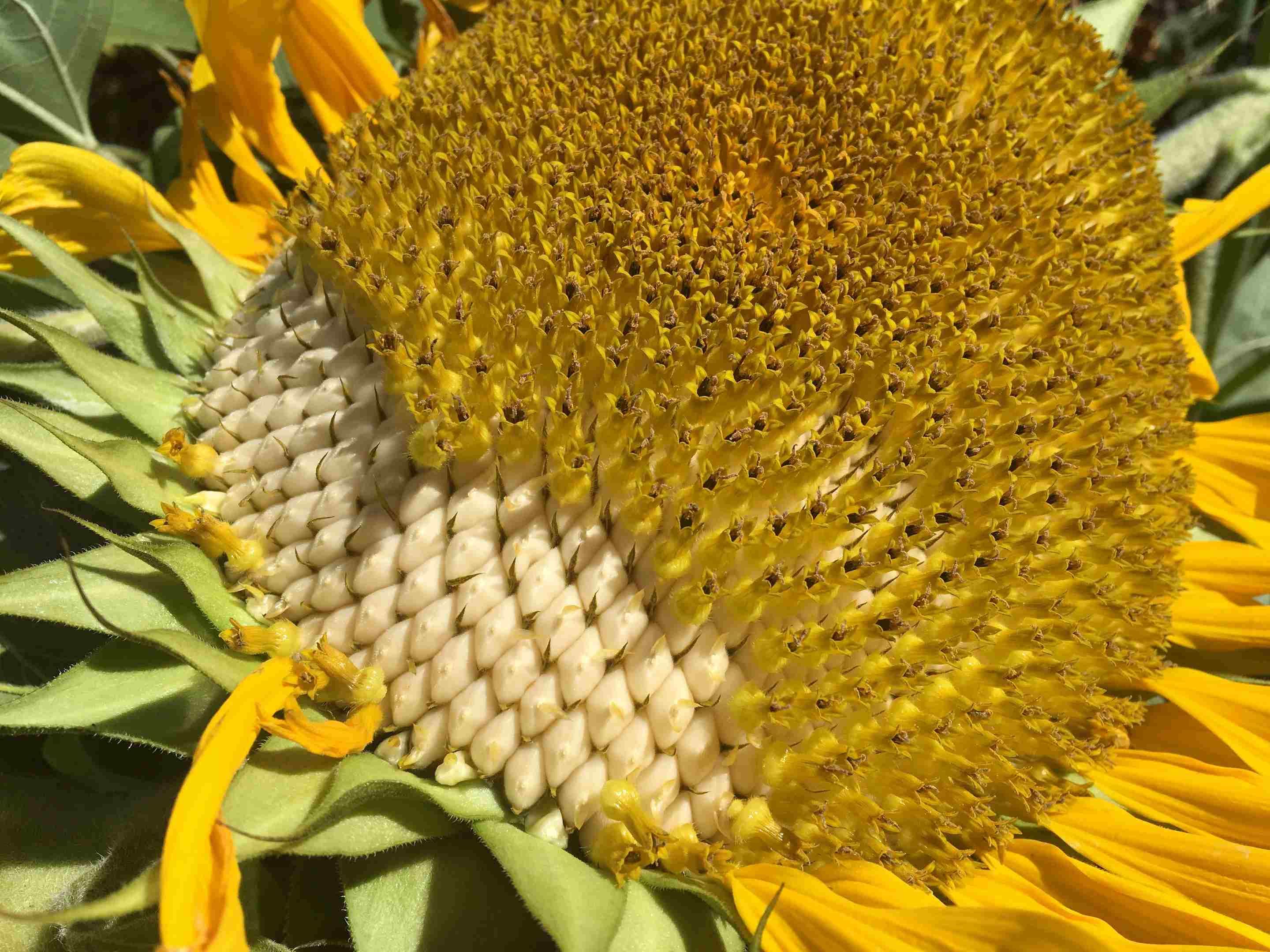

Ornamental Gardening
How Many Seeds Are In A Sunflower
Modified: January 22, 2024
Discover the fascinating world of ornamental gardening with our guide on how many seeds are typically found in a sunflower. Explore gardening tips and techniques today!
(Many of the links in this article redirect to a specific reviewed product. Your purchase of these products through affiliate links helps to generate commission for Chicagolandgardening.com, at no extra cost. Learn more)
Table of Contents
- Introduction
- The Anatomy of a Sunflower
- The Formation of Sunflower Seeds
- Factors Affecting the Number of Sunflower Seeds
- Common Misconceptions About Sunflower Seeds
- Harvesting and Counting Sunflower Seeds
- The Average Number of Seeds in a Sunflower
- Variations in Seed Counts
- The Importance of Sunflower Seeds
- Conclusion
Introduction
Sunflowers are iconic plants known for their vibrant yellow petals and towering stalks. They are not only a popular ornamental choice, but they also have a fascinating plant biology that captivates gardening enthusiasts. One of the most common questions asked by gardeners is, “How many seeds are in a sunflower?” This seemingly simple query has piqued the curiosity of many, and in this article, we will delve into the intricate world of sunflower anatomy to uncover the answer.
Understanding the anatomy of a sunflower is essential to comprehend the formation and abundance of its seeds. From the roots to the petals, each part of the sunflower contributes to its growth and reproduction. By exploring the various factors that affect the number of seeds, we can gain insight into the incredible mechanism behind sunflower seed production. Furthermore, we will dispel some common misconceptions about sunflower seeds, and discuss techniques for harvesting and counting them in your garden.
Whether you are a professional gardener or an avid backyard enthusiast, knowing the average number of seeds in a sunflower can provide useful knowledge for planning and cultivating your ornamental garden. Additionally, understanding the variations in seed counts can help you choose the right sunflower variety based on your preferences and needs. Sunflower seeds are not only a delight for the eyes and a delight to grow, but they also have significant importance in various industries, from food to cosmetics.
So, let us embark on this exciting journey into the world of sunflower seeds, and discover the remarkable secrets hidden within the sunny faces of these magnificent plants!
The Anatomy of a Sunflower
Before we dive into the formation of sunflower seeds, it’s crucial to understand the anatomy of a sunflower. A sunflower plant consists of several key parts, each playing a vital role in its growth and reproduction.
The roots of a sunflower anchor the plant into the soil and absorb water and nutrients for its nourishment. These roots spread out horizontally, typically extending further than the height of the sunflower itself. They not only provide stability to the plant but also play a crucial role in nutrient uptake.
Above the ground, the sunflower stem emerges from the root system and serves as the plant’s supportive structure. The stem is thick and strong, allowing the sunflower to grow tall and withstand strong winds. It transports water, nutrients, and sugars between the roots and the rest of the plant.
The leaves of a sunflower are large, coarse, and rough to touch. They capture sunlight and convert it into energy through photosynthesis, a process that fuels the growth and development of the plant. The sunflower leaves are arranged alternately along the stem and have a distinctive shape that resembles the rays of the sun.
At the top of the sunflower stem, a large, round bud forms, which eventually blooms into the iconic flowerhead. Made up of numerous individual flowers, the flowerhead is composed of two main types: ray flowers and disk flowers. The ray flowers are typically yellow and have long petals that radiate outwards, creating the sunflower’s recognizable appearance. The disk flowers, located at the center of the flowerhead, are small and dense, forming a circular pattern.
Within the disk flowers, the reproductive parts of the sunflower are situated. These include the stamens, which consist of the filament and the anther. The filament is a thin stalk that supports the anther, where pollen is produced. The central part of the flower is the pistil, consisting of the stigma, style, and ovary. The stigma is sticky to capture pollen, while the style connects it to the ovary.
Now that we have a basic understanding of the sunflower’s anatomy, we can explore how these intricate components work together to produce the seeds that we are so curious about.
The Formation of Sunflower Seeds
The process of sunflower seed formation begins with pollination. Pollination occurs when pollen from the anthers of one sunflower flower is transferred to the stigma of another flower. This can happen through various means, including wind, insects, or even human intervention.
Once pollination takes place, the pollen grains travel down the style and into the ovary, where fertilization occurs. Fertilization is the fusion of the male and female reproductive cells, resulting in the formation of a zygote. This zygote then develops into an embryo, which is crucial for seed development.
The ovary, which is situated at the base of the sunflower flowerhead, starts to swell and grow after fertilization. As the ovary develops, it transforms into the fruit, commonly known as the sunflower seed shell. The sunflower seed shell is an outer protective layer that encloses the developing seeds.
Within the sunflower seed shell, multiple individual seeds are formed. These seeds are known as achene seeds, which are small, dry, and single-seeded fruits. Each achene seed is attached to the inside of the sunflower seed shell, usually arranged in a spiral pattern.
As the sunflower seeds continue to develop, they accumulate nutrients and energy, allowing them to grow and mature. The process of seed development involves the uptake of essential minerals, carbohydrates, proteins, and fats from the plant’s resources. This ensures that the seeds have the necessary nutrients to germinate and grow into new sunflower plants.
As the seeds reach maturity, the sunflower seed shell gradually dries out and hardens. This process is accompanied by changes in color, with the once-green seed shell turning brown or black. At this point, the sunflower is ready for harvest, and the seeds are fully formed and viable.
In order to maximize the number of mature seeds produced, it is vital to provide optimal growing conditions for sunflowers. Adequate sunlight, water, and nutrients are essential for healthy plant growth and robust seed development. By understanding the intricate process of sunflower seed formation, gardeners can ensure that their sunflowers produce abundantly, enriching gardens with their beautiful flowers and nutritious seeds.
Factors Affecting the Number of Sunflower Seeds
Several factors contribute to the number of seeds produced by a sunflower plant. These factors can vary based on genetics, environmental conditions, and cultivation practices. Understanding these influences can help gardeners optimize seed production and yield. Here are some key factors that affect the number of sunflower seeds:
- Genetics: The genetics of a sunflower variety play a significant role in determining the seed count. Different varieties have different genetic potentials for seed production. Some varieties are bred specifically for high seed yields, while others may prioritize other characteristics such as flower size or color.
- Pollination: Successful pollination is crucial for seed formation. The process of transferring pollen from the anther to the stigma can be influenced by factors such as the presence of pollinators, wind conditions, and the compatibility between the pollen donor and recipient plants. Adequate pollination ensures that each ovule in the sunflower’s flowerhead is fertilized and develops into a seed.
- Fertilization: The successful fusion of male and female reproductive cells during fertilization is essential for seed development. Factors that affect fertilization include the quality and viability of the pollen grains, the receptivity of the stigma, and the compatibility between pollen and pistil.
- Growing Conditions: Environmental factors significantly impact seed production. Sunflowers thrive in full sunlight, well-drained soil, and moderate temperatures. Adequate water and nutrient availability are necessary for optimal growth and seed development. Stressors such as drought, nutrient deficiencies, extreme temperatures, or pest and disease infestations can reduce seed production.
- Plant Density: The spacing between sunflower plants can affect seed production. If plants are overcrowded, competition for resources such as sunlight, water, and nutrients can limit seed production. Proper spacing allows each plant to access sufficient resources and maximize seed yields.
- Plant Health: Healthy plants are more likely to produce a higher number of seeds. Regular monitoring for pests and diseases, implementing appropriate pest management strategies, and providing adequate nutrition can help maintain plant health and promote optimal seed production.
- Pollination Timing: The timing of flowering is crucial for successful pollination and seed formation. If a sunflower plant flowers too early or too late when other compatible flowers are not available for pollination, seed production may be reduced. Ensuring proper synchronization with compatible pollinators or adjacent sunflower plants can increase seed yield.
By considering these factors and implementing appropriate cultivation practices, gardeners can maximize the number of seeds produced by their sunflower plants. Understanding the complexities of seed production allows for the cultivation of healthy, vibrant sunflowers that yield an abundant harvest of seeds.
Common Misconceptions About Sunflower Seeds
Sunflower seeds have long been a popular snack, and they also hold a significant place in ornamental gardening. However, there are several common misconceptions about sunflower seeds that often lead to confusion among gardeners and enthusiasts. Let’s debunk some of these misconceptions to gain a better understanding of these fascinating seeds:
- Sunflower seeds are fruits: While sunflower seeds are indeed enclosed within a fruit-like structure, they are not technically classified as fruits. They are considered a type of seed known as an achene. Achenes are dry, one-seeded fruits that do not split open when mature.
- All sunflower seeds are edible: While most sunflower seeds are indeed edible and commonly used as a snack, not all sunflower varieties produce seeds suitable for consumption. Some sunflower varieties are grown specifically for their ornamental value and may have seeds that are smaller, harder, or less desirable for eating.
- Sunflower seeds will grow into a new plant if planted: While it’s true that sunflower seeds have the potential to germinate and grow into new plants, not all sunflower seeds are viable for planting. Commercially packaged sunflower seeds are often processed and may not be suitable for germination. It’s best to obtain seeds specifically labeled for planting if you wish to grow sunflowers from seed.
- All sunflower seeds produce oil: Sunflower seeds are indeed a popular source of oil, but not all sunflower seed varieties are cultivated for oil production. Some varieties are primarily used for their nutritional value as edible seeds, while others may be bred for ornamental purposes.
- Roasting sunflower seeds removes their nutritional value: While roasting sunflower seeds can alter their texture and flavor, it does not significantly diminish their nutritional value. Roasted sunflower seeds are still a good source of essential nutrients, including healthy fats, fiber, protein, and various vitamins and minerals.
- Sunflower seeds are only suitable for bird feeders: While sunflower seeds are a popular choice for bird feeders due to their high nutritional content, they have a range of other uses as well. Sunflower seeds can be used in cooking, baking, garnishing, or ground into a paste for various culinary applications. They are also used in the production of oils, spreads, and other food products.
- Sunflower seeds are harmful to plants: Some gardeners may have concerns that planting sunflower seeds can harm other nearby plants. However, sunflower seeds do not possess any allelopathic properties that inhibit the growth or development of other plants. In fact, they can contribute to a thriving garden ecosystem by attracting pollinators and beneficial insects.
By dispelling these misconceptions, we can appreciate sunflower seeds for their true nature and explore the countless possibilities they offer in both culinary and gardening endeavors. Sunflower seeds are not only tasty and nutritious, but they also bring beauty and joy to gardens with their vibrant flowers and abundant seed heads.
Harvesting and Counting Sunflower Seeds
Harvesting sunflower seeds is an exciting and rewarding process for gardeners. The timing of the harvest is crucial as it determines the maturity and viability of the seeds. Here are some steps to guide you through the process of harvesting and counting sunflower seeds:
- Monitoring seed development: As the sunflower flowerhead matures, the seeds will begin to fill out and the back of the flowerhead may start to turn yellow or brown. They should feel firm and plump to the touch. Keep a close eye on the progress of seed development to determine the optimal time for harvest.
- When to harvest: The best time to harvest sunflower seeds is when the flowerhead has fully matured and the seeds are no longer green or soft. The back of the flowerhead will turn brown, and the seeds should be loose and easy to remove. Typically, this occurs around 30 to 45 days after the flowerhead has fully bloomed.
- Removing the flowerhead: Use pruning shears or a sharp knife to cut the flowerhead off the stem, leaving a few inches of stem attached. Be careful not to damage the seeds or the main stem of the plant.
- Drying the flowerhead: Hang the sunflower flowerhead upside down in a well-ventilated area, such as a garage or shed. Ensure it is protected from moisture and direct sunlight. Allow the flowerhead to dry for about two weeks or until the seeds are thoroughly dry and easy to remove.
- Extracting the seeds: Once the flowerhead is dry, gently rub or shake it to release the seeds. They should come out easily from the seed head. Place a container, such as a bowl or bucket, underneath to catch the seeds as they fall.
- Counting the seeds: To count the sunflower seeds, spread them out on a clean surface and use your fingers or a small scoop to separate and arrange them in groups. You can use a seed tray or a flat surface to organize the seeds into rows or piles. Count the seeds in each group and record the numbers.
- Storing the seeds: Once you have finished counting the seeds, ensure they are completely dry before storing them. Place the seeds in an airtight container, such as a glass jar or a sealable bag, and store them in a cool, dry place until you are ready to use them or sow them for the next growing season.
Harvesting and counting sunflower seeds not only provides a sense of satisfaction but also gives you a better understanding of the yield your plants have produced. It allows you to track the success of your gardening efforts and plan for future seasons. So go ahead, enjoy the process, and savor the rewards of your sunflower harvest!
The Average Number of Seeds in a Sunflower
When it comes to the average number of seeds in a sunflower, it’s important to note that there can be considerable variation depending on the specific sunflower variety, growing conditions, and other factors. However, on average, a mature sunflower can produce anywhere from 1,000 to 2,000 seeds.
The size and type of sunflower variety can play a significant role in the number of seeds produced. For larger-seeded sunflower varieties, such as those typically used for snack seeds or oil production, the number of seeds can be towards the lower end of the average range. Conversely, smaller-seeded ornamental sunflower varieties may yield a higher number of seeds within the average range.
Other factors that can influence the seed count include the size and health of the individual flowerhead, the effectiveness of pollination, and the availability of resources such as sunlight, water, and nutrients during seed development. Additionally, genetic factors can dictate the natural variation in seed count among different sunflower plants.
It’s worth noting that as sunflower plants grow and produce more flowerheads, the total number of seeds from an entire plant can be quite impressive. Sunflowers are known for their ability to produce multiple flowerheads on a single plant, increasing the total seed count per plant.
While the average number of seeds in a sunflower provides a general range, it’s essential to keep in mind that each sunflower is unique, and actual seed counts can vary. Factors such as natural genetic variation, pollination success, and environmental conditions can contribute to deviations from the average.
Counting the seeds of several sunflowers within your garden can help provide a more accurate estimate of the seed count specific to your growing conditions and sunflower varieties. By tracking the seed count over time, you can also observe any variations and make adjustments to optimize the conditions for seed production.
Ultimately, whether you are growing sunflowers for their beauty, their culinary uses, or their ornamental value, the seed count adds to the overall experience. Each seed represents the potential for future growth, nourishment, and enjoyment that sunflowers bring to our gardens and lives.
Variations in Seed Counts
When it comes to sunflower seed counts, there can be significant variations depending on various factors. These variations can occur within and between different sunflower varieties, as well as due to environmental conditions and cultivation practices. Understanding these variations can provide valuable insights into seed production and help optimize gardening efforts. Here are some key factors that contribute to variations in sunflower seed counts:
- Sunflower variety: Different sunflower varieties have distinct genetic characteristics, including seed size, shape, and number. Some varieties are bred for larger seeds, while others may be bred for ornamental purposes with smaller seeds. It’s essential to choose the right sunflower variety based on your desired seed count and intended use.
- Fertilization and pollination: The successful fertilization of sunflower flowers relies on adequate pollination, which can be influenced by factors such as the presence of pollinators, weather conditions, and planting density. Poor pollination can lead to reduced seed counts, while optimal pollination can result in higher seed yields.
- Environmental conditions: Sunflowers thrive in full sunlight and moderate temperatures. However, extreme weather conditions, such as excessive heat, drought, or prolonged periods of rain, can negatively impact pollination and seed development. Providing optimal growing conditions, including sufficient water and nutrients, can help minimize variations in seed counts.
- Growing practices: Cultivation practices, such as planting density, spacing, and overall plant health, can also influence seed counts. Overcrowding sunflower plants can lead to competition for resources and decreased seed production. Maintaining proper spacing and implementing effective pest and disease management strategies can help ensure healthy plants and maximize seed yields.
- Genetic variation: Within a single sunflower variety, there can be natural genetic variation that influences seed counts. This variation can result in sunflower plants within the same batch producing different numbers of seeds. Genetic diversity can contribute to the overall resilience and adaptability of sunflower populations.
- Harvesting timing: The timing of the harvest can also impact seed counts. Harvesting too early may result in underdeveloped seeds, while waiting too long can lead to seed shattering and loss. Monitoring the maturity of flowerheads and harvesting at the optimal time can help maximize seed counts.
When observing variations in seed counts, it’s important to consider the nuances of each sunflower plant and the specific growing conditions. While there is an average range for seed counts, individual plants may deviate from this range. Tracking and comparing seed counts over time can provide valuable information and insights for future gardening endeavors.
Variations in seed counts also showcase the beauty of nature and the diversity within sunflower populations. Each sunflower has its unique characteristics and potential for seed production. Embracing these variations adds to the charm and allure of growing sunflowers and experiencing the surprises they bring.
The Importance of Sunflower Seeds
Sunflower seeds hold immense importance, not only in the world of gardening and agriculture but also in various other industries and aspects of our daily lives. From their nutritional value to their ecological significance, sunflower seeds have a wide range of benefits. Let’s explore the importance of sunflower seeds:
Nutritional value: Sunflower seeds are packed with essential nutrients. They are an excellent source of healthy fats, including omega-6 fatty acids, which are vital for brain function and cardiovascular health. Sunflower seeds are also rich in protein, fiber, vitamins (such as vitamin E and B vitamins), and minerals (like magnesium, selenium, and copper). Incorporating sunflower seeds into a balanced diet can contribute to overall health and wellbeing.
Culinary versatility: Sunflower seeds are not only nutritious but also incredibly versatile in the kitchen. They can be enjoyed as a snack on their own, added to salads, trail mixes, granola bars, and baked goods, or even ground into a paste to make sunflower seed butter. Their mild and nutty flavor enhances a wide range of dishes, adding texture, taste, and nutritional value.
Oil production: Sunflower seeds are a primary source of high-quality oil. Sunflower oil is commonly used in cooking and baking due to its neutral taste and high smoke point. It is rich in monounsaturated and polyunsaturated fats, which are considered heart-healthy fats. Sunflower oil is also used in the manufacturing of various food products, such as margarine and salad dressings, and is an essential ingredient in the cosmetic and skincare industry.
Floral industry: Sunflower seeds play a crucial role in the floral industry. The beauty and vibrancy of sunflowers make them a popular choice for floral arrangements, events, and decorations. Sunflower seeds can be used in the production of cut flowers, providing a sustainable source for the floral industry.
Ecological importance: Sunflowers contribute to the ecological health of gardens and landscapes. Their bright, showy flowers attract a wide range of pollinators, including bees, butterflies, and birds. By planting sunflowers, gardeners can support pollinator populations and enhance biodiversity. Additionally, sunflower seeds can be a valuable food source for birds and wildlife, providing nourishment during the colder months.
Aesthetics and ornamental value: Sunflowers are renowned for their striking beauty and iconic appearance. Their large, yellow flowerheads add a cheerful and vibrant touch to garden landscapes. Sunflowers are often cultivated for their ornamental value, making them popular choices for garden borders, backgrounds, and cut flower arrangements. Their presence brings joy and visual appeal, brightening up any space.
The importance of sunflower seeds extends beyond their nutritional value. They have economic, ecological, and cultural significance, making them a valuable crop in various industries and a beloved addition to gardens and natural landscapes. By appreciating the multifaceted nature of sunflower seeds, we can fully embrace their importance and maximize the benefits they offer in our lives.
Conclusion
Sunflower seeds are more than just a tasty snack or a beautiful addition to gardens. They are a testament to the intricate beauty of nature and the wonders of plant biology. Understanding the anatomy of a sunflower and the formation of its seeds allows us to appreciate the remarkable processes that lead to their creation.
While the average number of seeds in a sunflower ranges between 1,000 to 2,000, variations in seed counts are influenced by factors such as genetics, pollination, environmental conditions, and cultivation practices. These variations highlight the uniqueness of each sunflower plant and add to the awe-inspiring diversity of nature.
Harvesting and counting sunflower seeds gives us a sense of accomplishment and a deeper connection to the plants we cultivate. Whether we choose to enjoy sunflower seeds as a nutritious snack, use them in culinary creations, or appreciate their ornamental beauty, they hold immense value in various aspects of our lives.
Sunflower seeds have nutritional benefits, providing a rich source of healthy fats, protein, fiber, vitamins, and minerals. Their versatility in the kitchen allows for countless culinary creations. Furthermore, sunflower seeds contribute to the production of oil, adding flavor and functionality to our food and various consumer products.
From an ecological standpoint, sunflowers play an essential role in pollinator conservation and biodiversity. Their bright flowers attract pollinators and provide a valuable food source for birds and wildlife. In the world of aesthetics, sunflowers bring joy and visual appeal to gardens, events, and floral arrangements.
As we embrace the importance of sunflower seeds, we recognize the interconnectedness of nature and the impact we can have on the world around us. By fostering healthy sunflower plants, supporting pollinators, and utilizing these remarkable seeds, we contribute to a more sustainable and vibrant ecosystem.
So, whether you’re a gardening enthusiast, a food lover, or simply a lover of beauty, take a moment to marvel at the wonders of sunflower seeds. They are nature’s gift, offering nourishment, joy, and a profound connection to the natural world.
